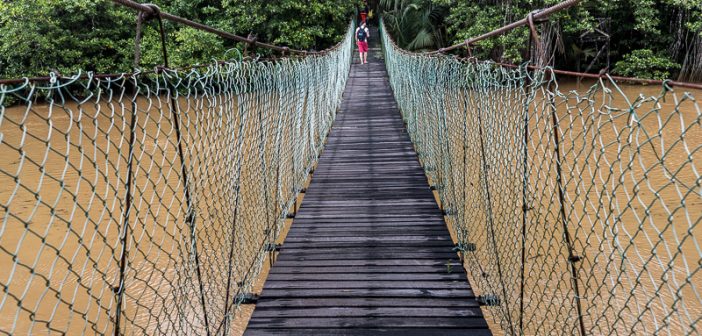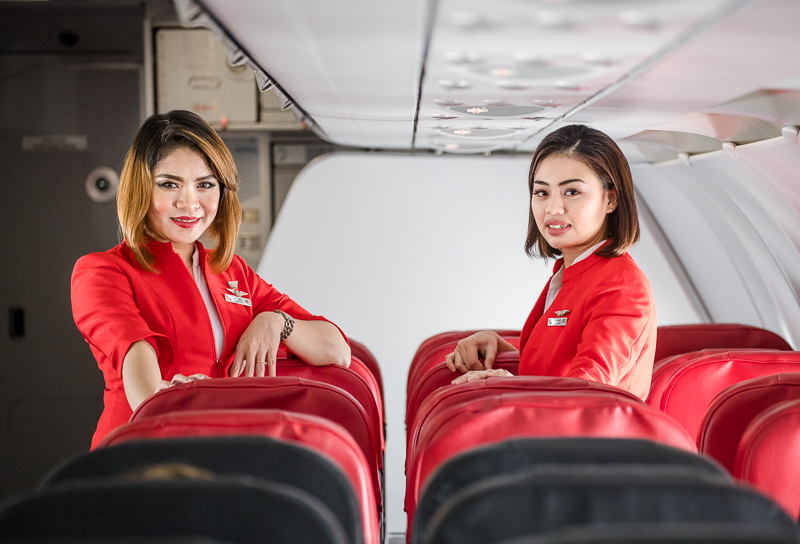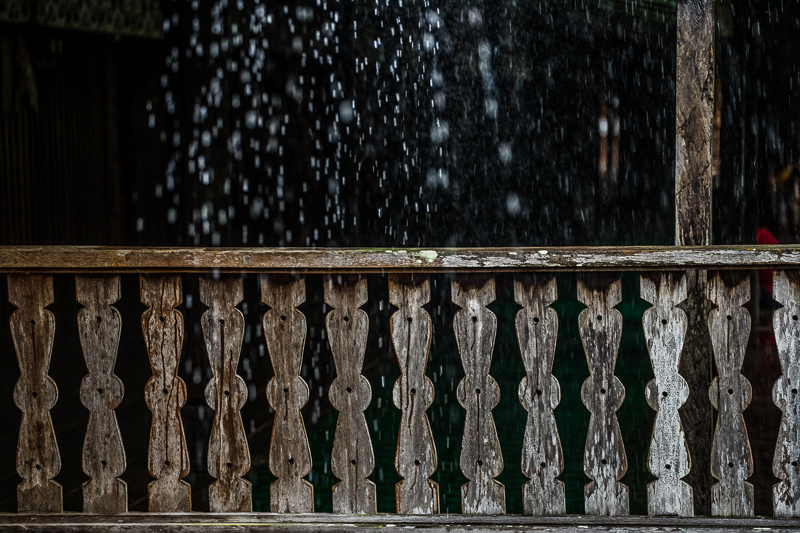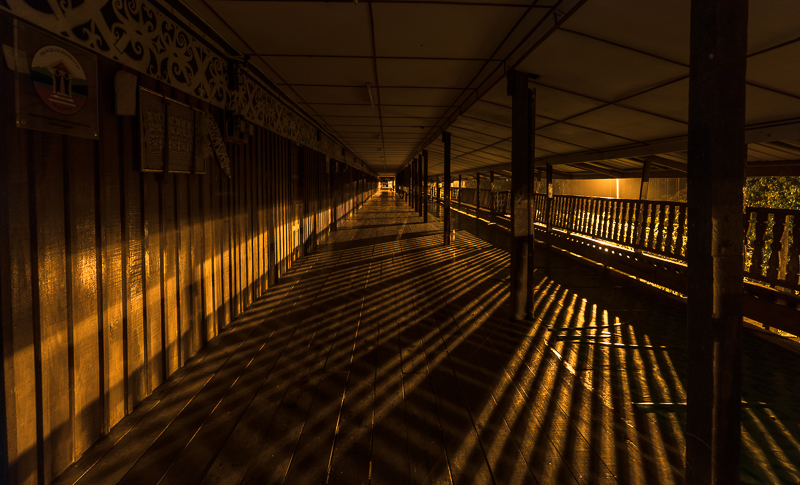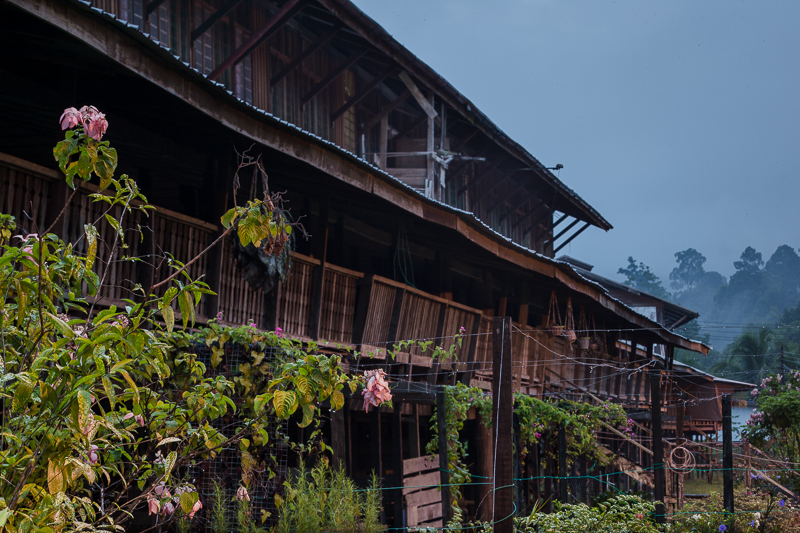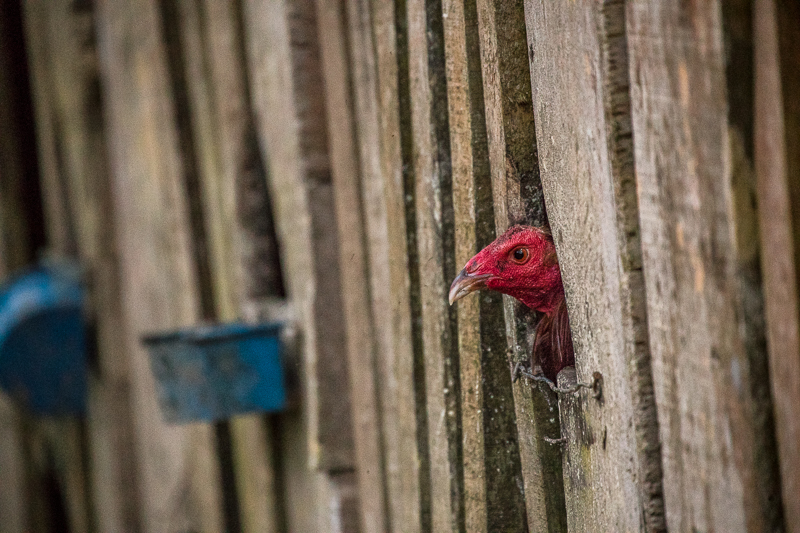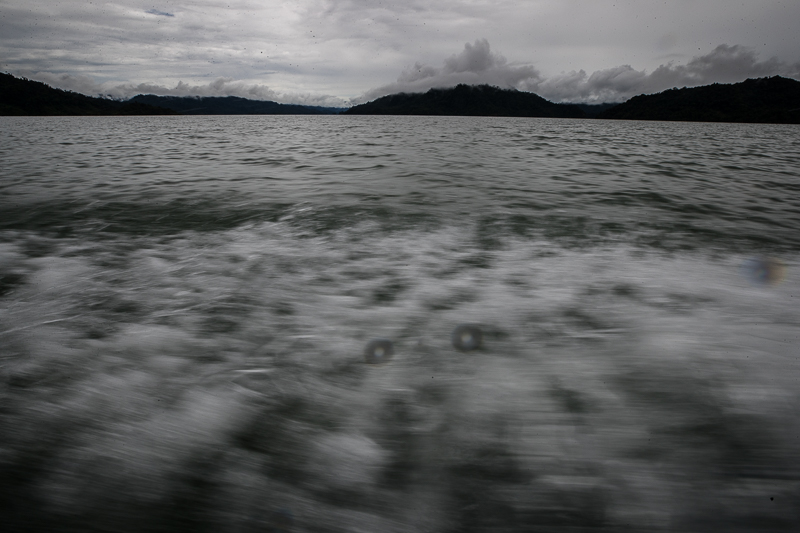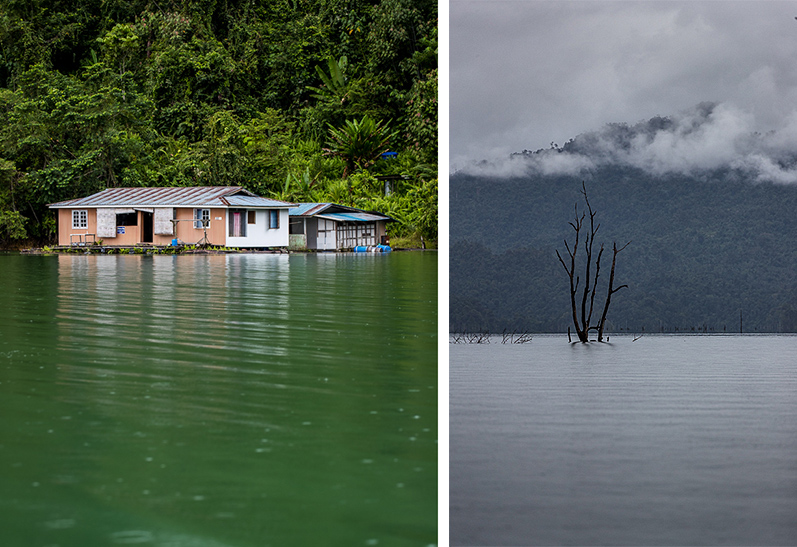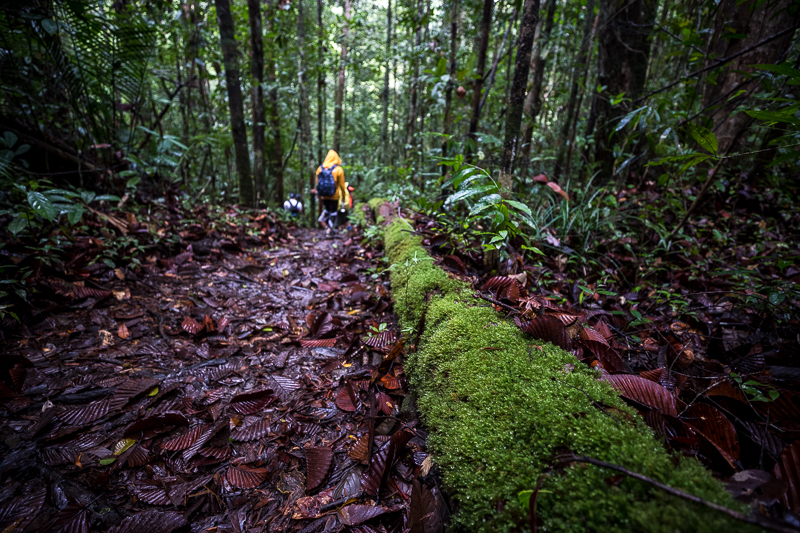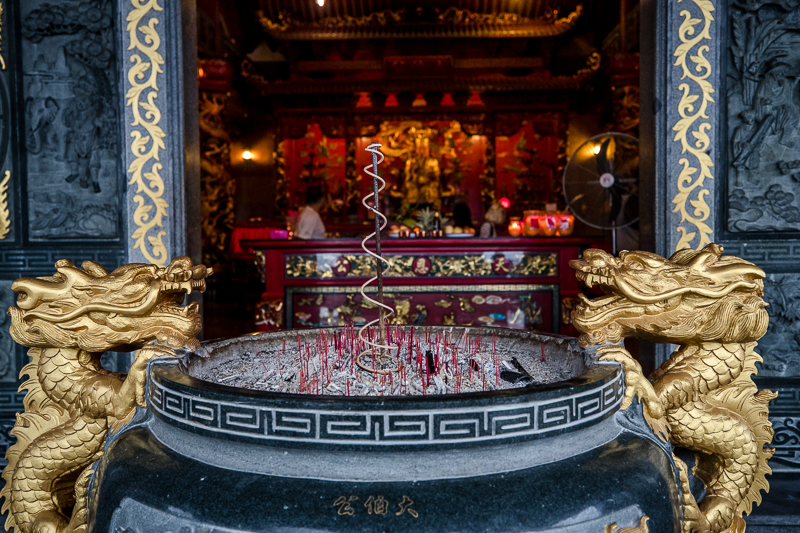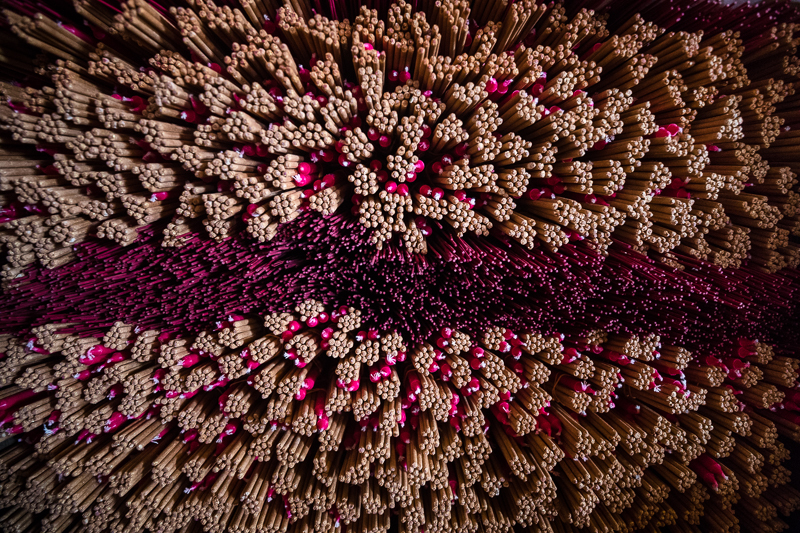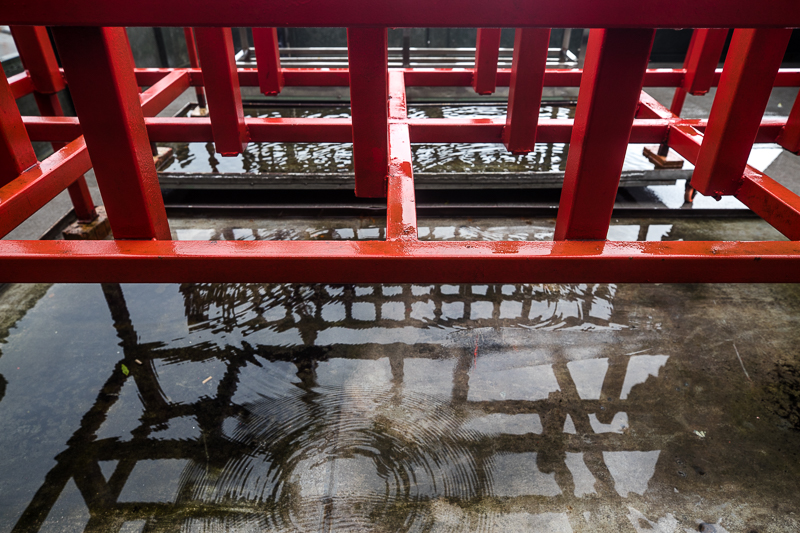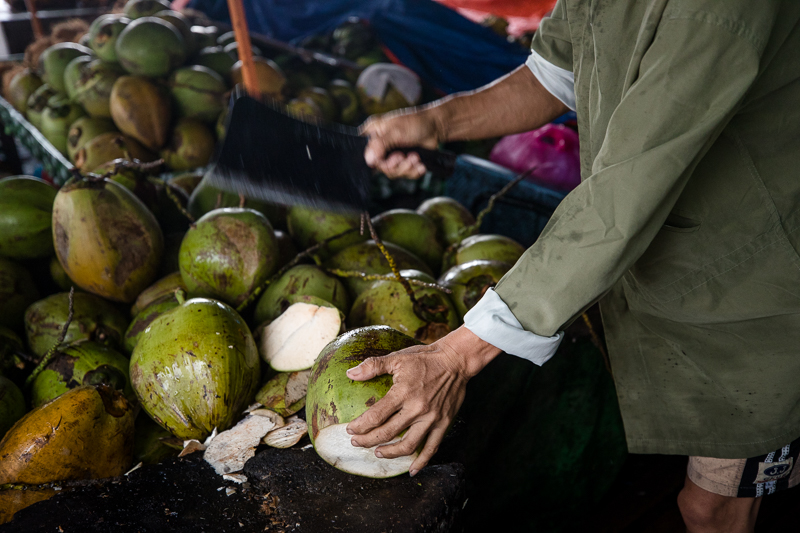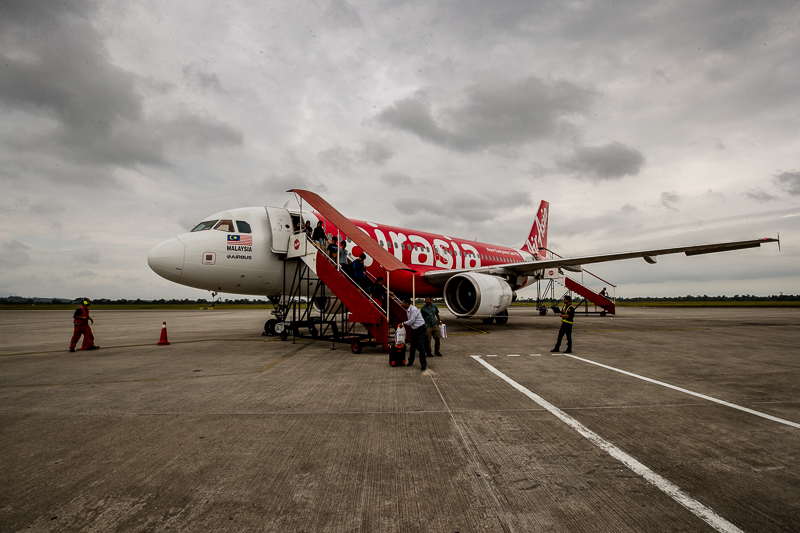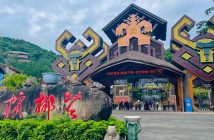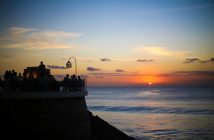Bintulu is one of the places in Malaysia that most people would not think of visiting or have even heard of before. I, however, visited it some 20 years ago. Back then, the journey to Bintulu was via speedboats from Sibu, an inland town in central Sarawak. Now, I could actually take a direct less-than-two-hour flight from Singapore, thanks to AirAsia.
Naturally, I was curious what Bintulu has to offer since my last visit. En route to a small town named Kampong Asap, our tour guide stopped us over at an Iban graveyard. The Ibans or Sea Dayaks are a branch of the Dayak people of Borneo. Some graves with a cross belong to Christian Ibans. Other graves have television, motorcycles, fishing net etc next to the tombstone. Our guide told us that the item placed next to a tombstone is usually the favourite item of the deceased. Many Ibans believe that if they do not place the favourite item at the grave, the deceased might come back in dreams to ask the family members for their favourite item.
When we finally arrived at Uma belor longhouse in Sungei Asap, it was quite late in the afternoon and also raining. I had stayed in a longhouse during my first visit to Bintulu and it felt good to be back at one. Everything still looked the same, with a strange juxtaposition of the modern and traditional elements. Television, computers were found alongside traditional Kayan crafts such as the sape and the warrior shield.
Uma Belor Leo Dian Longhouse is considered one of the best Kayan longhouses and potentially the longest interrupted longhouse structure in Sarawak. The Kayan is the largest ethnic group in the ‘Orang Ulu’ community and they are are found mainly in Baram and certain parts of Kapit division. Many of them are expert craftsmen and can carve from a single block of belian, the strongest of the tropical hardwoods, to make a boat.
Life in the longhouse is communal. There are about 100 families in the longhouse and each family has its own partition and doors into his house. Inside each unit, there will usually be two to three communal bathrooms, as well as two to three toilets. Dinner is usually consumed in the kitchen/dining area and sometimes consumed in the verandah too. We were invited to the verandah to have some late afternoon tea breaks consisting of homemade butter cakes, banana chips and tea and coffee. It was so relaxing to have light snacks at the verandah and listening to the falling raindrops.
After our tea break, we visited another longhouse nearby as it has the tallest Belawing Pebeka Tawai in the world. The Belawing is a landmark of the strength encompassing the customs and the culture of Masayrakatnya. The Belawing is usually set up in front of a village and can be found in the villages of Dayak Kenyah communities in Kalimantan and Sarawak. In the past, the Kenyah people used to be headhunters as well and many rituals will be held at the Belawing. Nowadays, most Kenyahs are Christians and hence the headman of the longhouse placed a cross at the top of the Belawing to signify their change in beliefs.
After this short adventure, we headed back to Uma Belor Longhouse. It is interesting to note that the interior layout of the longhouse is designed like a HDB maisonette in Singapore. The first level of the longhouse consists of the living room, kitchen, dining area and bathrooms while the second floor is where the bedrooms are. Dinner is served in the dining area and again it is communal sharing style. We are treated to a fabulous spread of grilled chicken wings, local catfish cooked in sour spicy soup, oyster sauce kailan, curry fish and rice wrapped in banana leaf.
After dinner, we were treated to a performance of the traditional Kayan war dance called ngajat. Traditionally, a male dancer will don a loin cloth with a decorated chest piece and an elaborated headpiece with feathers from the hornbill. He will also wield a traditional sword (parang ilang) and sometimes a shield. Female dancers wear an embroidered long skirt with top, a headpiece decorated with short bird feathers and a cluster of long hornbill feathers attached to the top of their outstretched hands.
The musical ensemble consists of two sape (plucked lute), of which one provides the melody and the other furnishes a drone. Sometimes, a xylophone may be used as well. Some of us were asked to perform the dance as well and it was quite an experience. I had to use my two left foot to follow the rhythm.
Day 2
The next morning, I got up early to explore the longhouse. In the courtyard behind the longhouse is where the Kayan have their gardens. Lots of shrubs and flowers such as ixora and periwinkles can be found growing in abundance. The longhouse looks almost traditional except for the telltale signs of modernisation with the big satellite dishes for cable channels.
There are many chickens roaming freely in the area and I chanced upon a special hut where some chickens are kept. I realised this special hut is meant for the fighting cocks. Cock fighting is still a favourite activity for many people in the longhouses and one prized fighter cock can be sold be as high as RM3000 (about S$1,008).
As I walked further, I saw eggs sitting upon a row of tall bamboos with split wide open ends. They look really artistic and I thought it was just for decorative purpose. Later on I found out from one of my Iban friends that this is a form of sacrifice to the people who practise Bungan beliefs. Bungan is the concept of animism whereby a multitude of spirits, each with their own characteristics and responsibilities, whom the Kayan believed intervene in human affairs.
After breakfast, we visited a super huge manmade reservoir called Bakun to visit the Jelatong, which means floating houses in the Kayyan language. The Bakun dam is the biggest dam in Southeast Asia and generates 2400 megawatts of electricity. It is also the second tallest concrete-faced rockfill dam in the world. It was quite relaxing to travel across the great expanse of water that has the same surface area as Singapore.
On a fibreglass motor boat, we got to a little private island in the middle of the dam. Mr Bong, our homestay host at Uma Belor Longhouse is completing minor renovations on the villa that he has just built on the small island. He grew all sorts of fruits such as pineapples and bananas on the island.
After the visit to the dam, it was a long 3.5 hours drive back to Bintulu town where our stay for the night was at Everly Hotel Bintulu. We roamed the local night market near the old airport road and there were so much local food to choose from. I bought some vegetables and rendang mutton from a Malay stall and some chicken wings and local kueh kueh from another stall. There was even one stall selling a wide range of durians too. Visiting the night market seems to be one of the favourite past-times for the locals.
Day 3
Our third day turned out to be the most adventurous trek I have had for years. We were headed toward the Similajau National Park, which is famed for its great diversity of trees. We had to give the trek a go despite the rainy weather. After a quick check-in at the park ranger’s office at the park, we were given the green light to proceed.
The National Park acts as a home and natural habitat for the wildlife, flora and trees around. The main kinds of floras that are to be found in the park are Kerangas and Mixed Dipterocarp Forest. The famous Tongkat Ali, which apparently aids in male virility, can be found here too. The park is home to as many as 185 species of birds such as the Hornbills. As Sarawak is famous for crocodiles, it is quite normal to spot saltwater crocodiles by the beach. Dolphins, whales, dugongs and green turtles can be seen occasionally too.
After crossing a suspension bridge, we walked along the wet boardwalk for about 100 metres beyond it ended. Eventually, we were trekking on a mixture of soil, mud and leaves. I guess this is why we call it trekking. Despite the wet grounds, it was fairly easy to trek as there were many tree roots to step on for a better grip and I did not feel that it was too wet and slippery to walk.
It is funny how a city dweller like me usually starts to thread carefully in such a natural place in the beginning. I moved carefully as if I was moving in a landmine zone. I took care to avoid all puddles of water. Eventually as I grew accustomed to the terrain, I started darting around like a local and my steps became more firm.
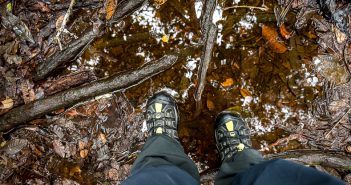
It is good to wear good waterproof trekking shoes.
A poncho/raincoat and a good pair of waterproof trekking shoes are two things that you would need when trekking in the National Park. Halfway through our trek, it started raining cats and dogs and we had no choice but to turn back.
As we were all drenched and wet from the rain, we headed back to the hotel to freshen up. We then went exploring Bintulu town. Many people love to visit Malacca and Penang whenever they think of taking a short vacation in Malaysia. I would highly recommend Bintulu as an alternative location. The pace of life in Bintulu is slow and the food is cheap and delicious. Basically it is like Malacca and Penang minus the hoards of tourists.
One of the must-go places in Bintulu town is the Tua Pek Kong along Main Bazaar Road. Built in the 1890s, it has always been an important landmark in Bintulu and is closely associated with the life of the people, especially the Chinese community in the Division. Many of the early Chinese immigrants arrived poor and deprived. Back then, it was common practice for the early Chinese immigrants to do two things — set up a school and a temple. It is typical to find a pair of lion statues called 石狮 (shi shi) guarding the entrance of Chinese temples here.
I was chatting with the caretaker of the temple, a Chinese man of Teochew descent and he told me to have a look at the small wooden Tua Pek Kong deity at the bottom of the huge shiny Tua Pek Kong deity. According to him, the original temple had burnt down in 1975 and only the wooden Tua Pek Kong deity remained intact. Hence, it is kept in this new temple as it is the guardian angel of the temple. Some media reports, however, said that half of Bintulu town was burnt down in 1975 during the big fire and the temple remained intact and untouched.
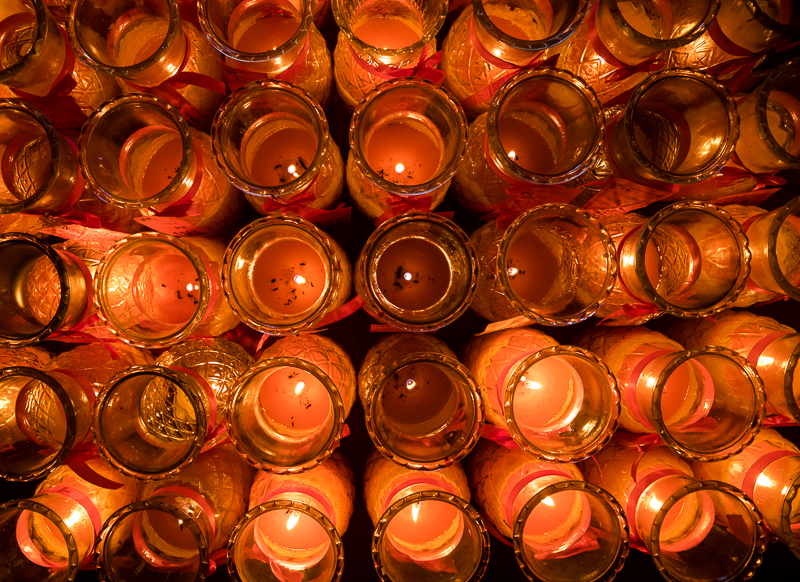
The lighting of a candle or an oil lamp represents the light of wisdom illuminating the darkness of ignorance.
Our final stop in Bintulu town is local markets namely Pasar Tamu and Pasar Utama whereby fresh local produce, snacks and delicacies can be found. Many people choose to visit this place as many Orang Ulu from afar will bring their own unique homegrown produce to sell in these markets and the quantity is limited. The Bintulu belachan (spicy shrimp paste) is apparently very much sought after.
How to get there
Air Asia flies four times a week from Singapore to Bintulu on Airbus A320.

